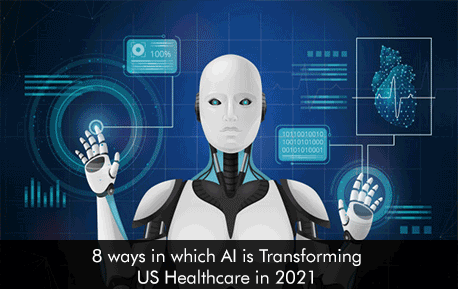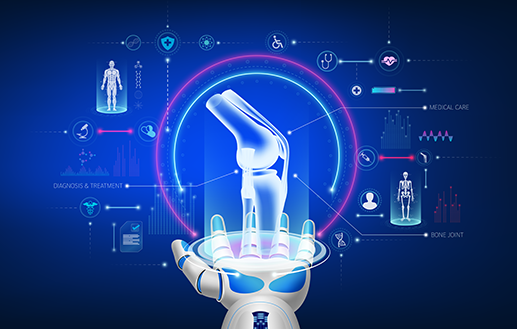
Technology is changing the world—and one of the biggest areas it’s transforming is healthcare in the United States. From the way doctors diagnose diseases to how patients manage their health, the entire system is going through a digital revolution. These changes are not just making things faster or easier—they are saving lives, cutting costs, and creating a smarter, more connected future of medicine.
Let’s explore how technology is reshaping American healthcare—and what it means for you and your loved ones.
1. The Rise of Telemedicine
One of the most noticeable changes in American healthcare is the boom in telemedicine. Before the COVID-19 pandemic, virtual doctor visits were rare. But now, millions of Americans use video calls to consult doctors for everything from minor colds to mental health therapy.
Thanks to secure video conferencing apps and electronic health records, patients can now:
- Talk to a doctor from home
- Get prescriptions sent directly to their pharmacy
- Save time and money on travel
This is especially helpful for people living in rural areas or those with limited mobility. Telehealth visits also reduce the burden on hospitals and clinics, helping them focus on critical care.

2. Artificial Intelligence (AI) in Diagnosis
AI is no longer science fiction—it’s in the hospital. Today, smart algorithms can scan X-rays, MRIs, and even detect early signs of cancer faster and sometimes more accurately than humans.
Hospitals are using AI tools to:
- Catch diseases early
- Reduce human error
- Speed up lab results
For example, AI is helping detect breast cancer and lung cancer at much earlier stages. It also helps doctors decide the best treatment options by analyzing patient history, current symptoms, and even genetic data.
However, AI is not replacing doctors—it’s becoming a powerful assistant, helping them make better and faster decisions.
3. Wearable Health Devices Are the New Health Monitor
You might already be wearing a Fitbit or Apple Watch—but these aren’t just for counting steps. Today’s health wearables can:
- Monitor heart rate
- Track sleep patterns
- Detect irregular heartbeats (like AFib)
- Alert emergency contacts if you fall
For patients with chronic diseases like diabetes or heart problems, wearable devices are a game-changer. Doctors can receive real-time updates and alerts if something goes wrong, allowing them to take action quickly.
Some devices also allow remote monitoring for patients after surgery, reducing the need for hospital stays and readmissions.
4. Electronic Health Records (EHR) and Patient Portals
Gone are the days of paper files. Today, most hospitals and clinics use Electronic Health Records (EHRs), allowing doctors and nurses to access your complete health history with just a few clicks.
EHRs make healthcare more efficient by:
- Reducing paperwork
- Avoiding duplicate tests
- Ensuring safer prescriptions
- Making referrals faster
Most hospitals also have patient portals where you can:
- View test results
- Book appointments
- Message your doctor
- Request prescription refills
This gives patients more control over their health and reduces confusion or delays in treatment.

5. Robotics in Surgery and Hospital Care
Robots are now helping doctors perform minimally invasive surgeries with more precision and less risk. Robotic systems like the da Vinci Surgical System allow surgeons to make tiny incisions with better control, which leads to:
- Faster recovery
- Less pain
- Lower chances of infection
Robots are also helping in non-surgical tasks such as:
- Delivering medicines within hospitals
- Cleaning patient rooms
- Assisting elderly patients in care homes
This helps hospitals stay clean, efficient, and safer for both staff and patients.
6. 3D Printing Is Changing Medical Tools and Body Parts
3D printing is another surprising technology changing healthcare. Using this method, scientists can now print:
- Custom-made prosthetics
- Dental implants
- Even human tissues like skin or bone models
For patients, this means more affordable and customized treatment options. In the future, doctors may even be able to 3D print organs for transplants.
7. Cloud Technology and Big Data
All the information collected—from wearables, medical records, and lab results—is stored using cloud technology. This means:
- Doctors can access patient data securely anytime
- Hospitals can share records quickly
- Researchers can analyze massive amounts of data to find trends
With Big Data, health experts can identify disease outbreaks early, improve treatments, and even predict which diseases may become common in the future.
For example, during the COVID-19 pandemic, data analysis helped track the virus, manage hospital resources, and guide public health decisions.
8. Personalized Medicine and Genetics
Thanks to advances in genetics and DNA testing, doctors can now offer personalized medicine—treatments based on your unique genetic makeup.
This helps:
- Find the right medicine with fewer side effects
- Understand risks of diseases like cancer or Alzheimer’s
- Make better lifestyle choices
Companies like 23andMe and AncestryDNA have made DNA testing popular, but now hospitals are also using genetic testing to tailor treatments.
9. Challenges and Ethical Concerns
While all these technologies are impressive, they come with challenges. Some major concerns include:
- Privacy and data security – Keeping patient information safe from hackers
- High costs – Advanced tech is often expensive and not available to everyone
- Training staff – Doctors and nurses need time to learn how to use new tools
- Over-reliance on machines – It’s important not to forget the human side of care
Lawmakers and healthcare leaders are working to make sure that technology helps everyone equally and doesn’t leave anyone behind.
The Future of Healthcare Is Here
The transformation of American healthcare is already happening—and it’s just the beginning. As technology becomes more advanced and more affordable, we can expect a future where:
- Diseases are caught early
- Treatments are faster and more personalized
- Hospitals are safer and more efficient
- Patients are more empowered and informed
For patients and healthcare professionals alike, the message is clear: embrace the change. Because in many ways, technology is not just improving healthcare—it’s giving us a healthier, longer
Must Read :- Gen Z Is Bringing Back 2000s Fashion Aesthetics Through Instagram Reels






